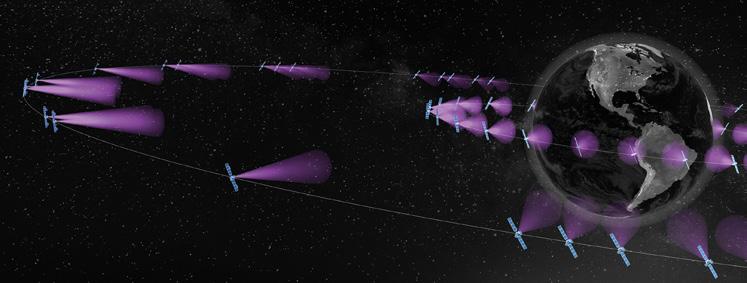
3 minute read
Ruy Pinto, Luxembourg Connecting the world through satellite Vital support for critical healthcare services
Connecting the world through satellite
by Ruy Pinto, Chief Technology Officer at SES, Luxembourg
Satellites have always been known for their superpower reach and their quick-to-market deployment capabilities, but as technology evolves, the world can expect optimised network performance and heightened flexibility. 2020 has been and continues to be a year of upheaval as large parts of the world battle with Covid-19, with governments having to reassess the health situations almost on a weekly basis.
Rapid connectivity and swift reaction
The increasing number of people working from home, attending school remotely, and simply being at home has put existing networks under pressure. Governments are also requesting extra capabilities to connect hospitals and medical professionals in remote locations. It has been a privilege to be part of the satellite industry where we have been able to react swiftly to various requests for additional connectivity services over the last six months. The nature of satellites being in space means that we have the advantage of being able to deploy connectivity swiftly. Flexibility has always been one of the key tenets of our industry, as it allows us to respond quickly to rapidly changing needs. From restoring communications networks, rolling-out e-applications, broadcasting sports, news and education channels, satellites have always been able to connect and reach people in places where no other technology can. One example is the Piedmont region in Italy, one of the worst Covid-19 hit areas in Europe, where the European Space Agency’s satellite-enabled mobile laboratory B-LiFE was rolled out for rapid Covid-19 testing of frontline workers. The workers who tested duties, thanks to the end-to-end satellite network for real-time data transmission provided by SES, LuxGovSat and the Luxembourg Department of Defence. Another example was when SES enabled the Mexican Photo: Marie de Decker government to deploy a telemediacross the country in less than three weeks, providing vital support for the delivery of critical healthcare services. When the world was in full lockdown in the second quarter of 2020, we were relocating beams in a matter of hours as opposed to days in order to respond to spikes in data connectivity, whenever and wherever they occurred. Thanks to our highly skilled operations team and our space technology, one of our customers in East Timor who had a short-term need for additional capacity was able to deploy additional connectivity services thanks to the reconfigured networks in less than 12 hours. Recently, we also steered an additional O3b Medium Earth Orbit (MEO) beam over the Gao region in Mali, to address an optical fibre shortage and support governments and institutions in their work when they
need it most. Making a difference with the MEO system This flexibility and agility will be further amplified in our next generation MEO communications system, O3b mPOWER. The terabit-scale and future-proof constellation is built on the success of SES’s MEO system that is in space today. Its 11 satellites are currently under construction and on track to launch
in 2021. These high-throughput and low-latency satellites are supported by automated, reconfigurable and predictive
ground infrastructure that will deliver managed services to our customers ranging from hundreds of Mbps to multiple Gbps.
The terabit-scale satellite communications system will deliver connectivity to any one location being reconfigurable in real
time, either for defence applications, to bridge the digital divide, or for connectivity on the move, such as aero or maritime
negative could continue with their cine network to 35 public hospitals
Ruy Pinto
has been Chief Technology Officer (CTO) at SES since January 2019. He holds a degree in electronic engineering and completed
use.
post-graduate studies in digital telecommunications systems, both from the Rio de Janeiro Catholic University. He joined SES in 2016 from Inmarsat where he covered various technical and managerial roles between 1990 and 2016. Our MEO systems, along with our Geostationary Earth Orbit (GEO) satellites and our constant technology innovation, are crucial components for making a difference to entire geographies and populations. No other technology has that near-instant flexibility and efficient reach. This is also why it makes me proud to be part of the satellite industry and of SES where we believe in connectivity and the transformational value of it for people and communities.

